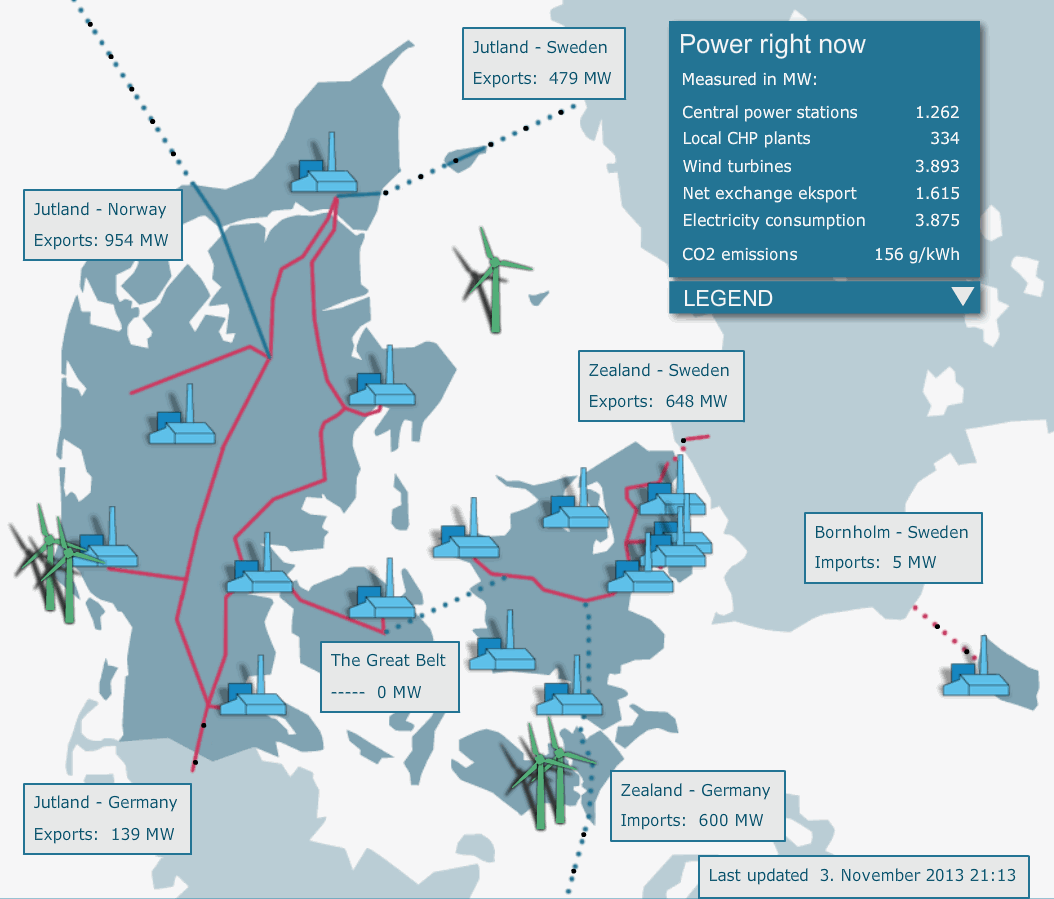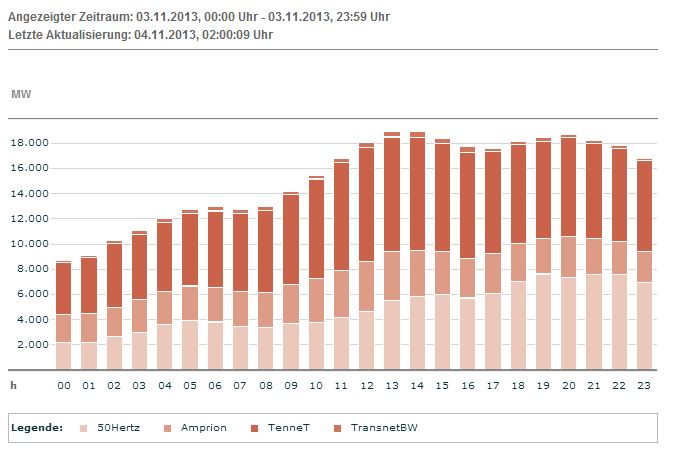La Danimarca supera il 100% di produzione di energia eolica
Lo scorso 3 novembre, la produzione di energia eolica in Danimarca ha superato il livello di consumo
Lo scorso 3 novembre, la produzione di energia eolica in Danimarca ha superato il livello di consumo energetico.
La Danimarca è inondata di luce, ed è sempre più originata da potenza eolica. Come si può vedere da questo sito di produzione di energia corrente, i danesi pubblicano una panoramica in tempo reale del loro settore energetico suddiviso in categorie di centrali elettriche, centrali di cogenerazione ( CHP locale ) e turbine eoliche. Dalla somma dei tre, sottraendo il consumo di energia elettrica, si ottiene lo scambio di potenza netta. Quando è positivo, il paese sta esportando.
Come si può vedere dalla schermata qui sotto , la produzione di energia ha superato il consumo di energia nel paese di Domenica sera - quando , evidentemente , la domanda di energia è relativamente basso . Ma i giorni in cui l'elettricità rinnovabile compensa completamente la potenza convenzionale nei giorni feriali si fanno sempre più frequenti. E la Danimarca è sempre più spesso vicina al100 per cento di produzione di energia eolica.

Source: energinet.dk
One salient feature here is the export balance with Germany at that moment. As you can see from the bottom, the country was exporting 139 MW to Germany via a land connection but importing 600 MW via undersea cables. In other words, at a moment when Danish power exports made up roughly a third of total power production, the country had a net power deficit vis-à-vis Germany of some 461 MW, so Germany was covering roughly a seventh of Denmark’s power demand at the same time.
The reason is quite simple – the wind conditions in neighboring northern Germany are roughly the same, so both countries had high wind power production. That evening, the approximately 34 gigawatts of wind power capacity installed in Germany was generating some 18 gigawatts of electricity, meaning that they were running at more than 50 percent of their rated capacity – compared to an average capacity factor over the year of below 20 percent.

Source: EEX
The combined effect is clear to see from the Danish screenshot. Denmark was exporting 954 MW to Norway alone when that screenshot above was taken, and the figure was a whopping 1,122 MW to Sweden. Essentially, the country’s conventional power plants and CHP units were all running for export, and the Danes still had some wind power imported from Germany to pass on.
Here, we clearly see why Denmark has a more ambitious target for its energy transition – 100 percent renewable energy by 2050, compared to “at least” 60 percent renewable energy in Germany by the same year. The Danes have loads of relatively inexpensive wind power, and they plan to store the excess partly as heat simply by running electric heating systems when power is cheap. Eventually, it could also be stored chemically, such as via electrolysis to produce green hydrogen. At that point, the heat and transport sectors could theoretically also be served with excess green power.
The German transition will be more challenging, partly because it is based more on solar, which will increase the need for seasonal chemical storage from the summer to the winter. Furthermore, German wind power is not quite as inexpensive as Denmark’s, and solar is more expensive than wind. Nonetheless, the comparison with Denmark shows why Germans justifiably do not think their energy transition is particularly radical.
Fonte: energytransition.de
